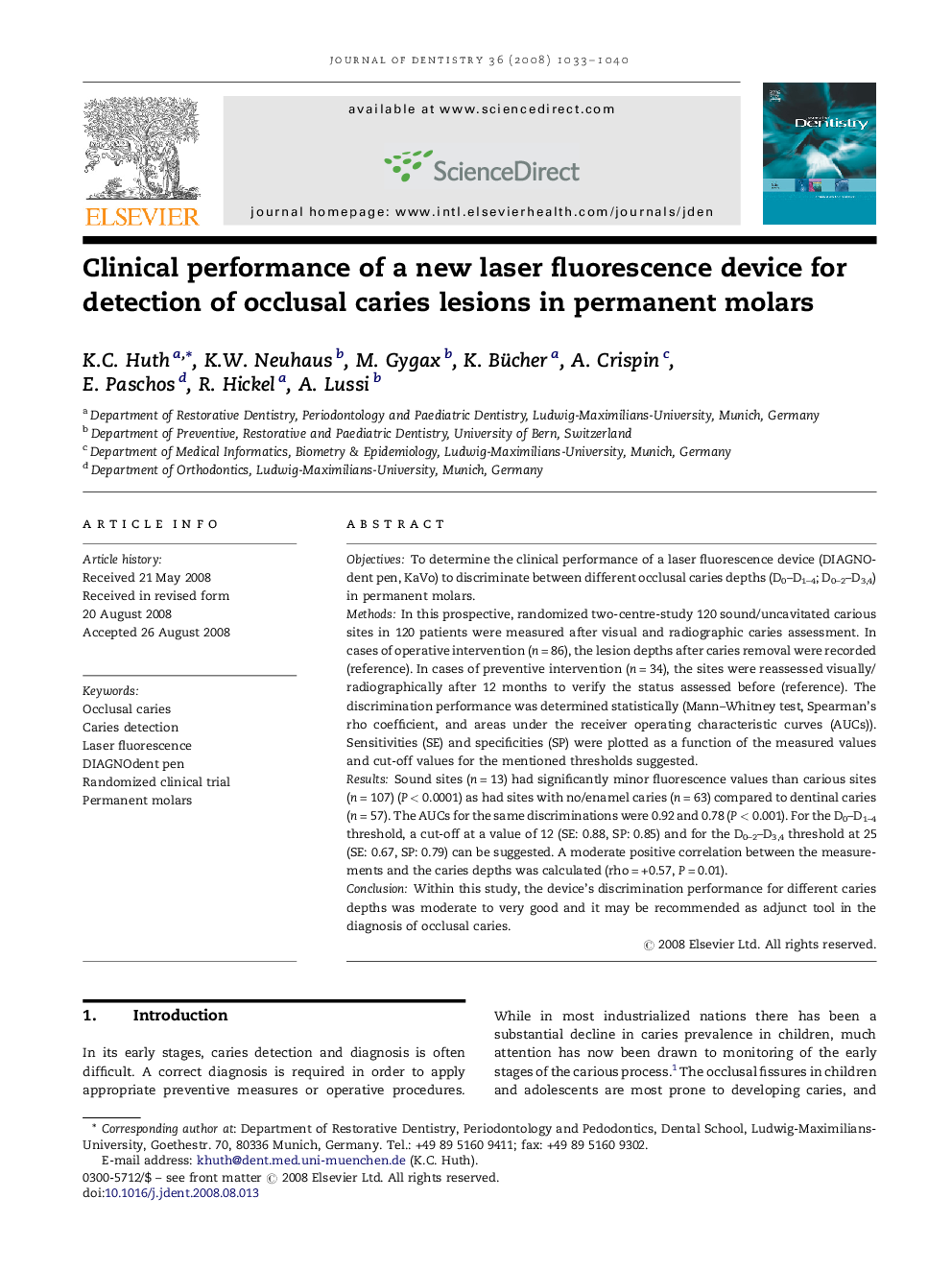| Article ID | Journal | Published Year | Pages | File Type |
|---|---|---|---|---|
| 3146383 | Journal of Dentistry | 2008 | 8 Pages |
ObjectivesTo determine the clinical performance of a laser fluorescence device (DIAGNOdent pen, KaVo) to discriminate between different occlusal caries depths (D0–D1–4; D0–2–D3,4) in permanent molars.MethodsIn this prospective, randomized two-centre-study 120 sound/uncavitated carious sites in 120 patients were measured after visual and radiographic caries assessment. In cases of operative intervention (n = 86), the lesion depths after caries removal were recorded (reference). In cases of preventive intervention (n = 34), the sites were reassessed visually/radiographically after 12 months to verify the status assessed before (reference). The discrimination performance was determined statistically (Mann–Whitney test, Spearman’s rho coefficient, and areas under the receiver operating characteristic curves (AUCs)). Sensitivities (SE) and specificities (SP) were plotted as a function of the measured values and cut-off values for the mentioned thresholds suggested.ResultsSound sites (n = 13) had significantly minor fluorescence values than carious sites (n = 107) (P < 0.0001) as had sites with no/enamel caries (n = 63) compared to dentinal caries (n = 57). The AUCs for the same discriminations were 0.92 and 0.78 (P < 0.001). For the D0–D1–4 threshold, a cut-off at a value of 12 (SE: 0.88, SP: 0.85) and for the D0–2–D3,4 threshold at 25 (SE: 0.67, SP: 0.79) can be suggested. A moderate positive correlation between the measurements and the caries depths was calculated (rho = +0.57, P = 0.01).ConclusionWithin this study, the device’s discrimination performance for different caries depths was moderate to very good and it may be recommended as adjunct tool in the diagnosis of occlusal caries.
